Disclaimer: General information only. All kinds of investment (particularly trading CFDs, commodities, and FX) involve significant risk, including the possibility of losing more than the amount invested, as well as market volatility and liquidity hazards. Past performance does not guarantee future results. Most investors will find such operations unsuitable.
Australian traders seeking to maximize their investment returns increasingly turn to automated trading solutions. Trading robots have revolutionized how investors participate in forex, cryptocurrency and CFD markets by executing trades 24/7 without emotional interference or constant monitoring.
The Australian trading landscape offers diverse automated platforms from algorithmic Expert Advisors on MT4 and MT5 to sophisticated AI-powered crypto bots. Whether you’re interested in forex automation, cryptocurrency trading or social copy trading platforms, selecting the right robot can significantly impact your trading success.
Top Platforms To Get Started in January 2026
1) Capital

Capital.com is a dynamic online brokerage platform known for its comprehensive CFD (Contract for Difference) offerings, catering to both novice and seasoned traders. With an extensive range of over 4,500 CFD markets—spanning stocks, forex, cryptocurrencies, commodities, and indices—Capital.com allows traders to access diverse asset classes without the burden of commissions. The platform is built on cutting-edge technology, providing a user-friendly interface with advanced charting tools and swift execution times, making it an appealing option for traders looking to explore fast-paced markets. Regulated by top-tier authorities such as the FCA, ASIC, and CySEC, Capital.com emphasizes security, transparency, and client protection through advanced encryption and segregated client accounts. The platform’s commitment to education and innovation sets it apart, offering over 5,000 learning resources, 24/7 multilingual support, and access to popular trading tools like TradingView and MetaTrader.
Pros:
-
Low-Cost Trading: Enjoy commission-free trading with competitive spreads. The average spread on EUR/USD is 0.67 pips, which is lower than the industry average.
-
Fast Execution: With a lightning-fast execution speed of 0.024 seconds, Capital.com ensures minimal slippage and optimal trading conditions.
-
Diverse Asset Selection: Over 4,500 CFDs available, including 285+ crypto CFDs, stocks, forex pairs, indices, commodities, and ETFs.
-
Educational Resources: Access 5,000+ educational tools, including webinars, videos, and articles, to support traders of all experience levels.
-
Regulated and Secure: Capital.com is licensed by multiple authorities, including the FCA, ASIC, and CySEC, offering robust security features like multi-factor authentication and segregated client accounts.
-
Flexible Accounts: Low minimum deposit of $20, with demo accounts for beginners and professional accounts offering higher leverage for experienced traders.
Cons:
-
CFD-Only Trading: Capital.com focuses solely on CFDs, which may not appeal to traders looking for traditional stock investments or other asset classes like options.
-
High Risk: CFD trading can lead to significant losses, especially when leveraging positions, and 63%-86% of retail investor accounts lose money.
-
Limited to Certain Regions: US residents are unable to open accounts with Capital.com, limiting its availability in some territories.
-
No Desktop Application: While the web platform is robust, Capital.com does not offer a downloadable desktop application for trading, relying solely on its web and mobile versions.
-
Inactivity Fees: Accounts that are inactive for 12 months may incur a small fee, which could deter traders who do not trade regularly.
Capital.com is a well-rounded option for those focused on CFD trading with low-cost, fast execution, and a broad range of educational tools, but it may not be suitable for those seeking real asset investments or lower-risk trading alternatives.
2) Avatrade
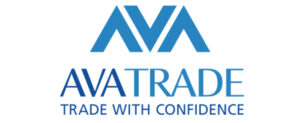
AvaTrade is a well-established global broker that has been serving traders since 2006. With a client base exceeding 200,000 and monthly trading volumes surpassing $60 billion, AvaTrade has earned a reputation for offering a platform that blends simplicity with advanced features. It is regulated across multiple jurisdictions, including ASIC in Australia, the EU, Japan, and more, making it a reliable choice for traders worldwide. AvaTrade caters to both beginner and advanced traders, providing a range of tools, educational resources, and platform options. Its services include automated trading, social trading, and access to a wide array of financial instruments, such as forex, stocks, commodities, and cryptocurrencies.
AvaTrade offers a straightforward account structure with minimal entry barriers, a user-friendly interface, and powerful charting tools. Traders can choose from platforms like MetaTrader 4 (MT4), MetaTrader 5 (MT5), and AvaTrade’s proprietary AvaOptions platform. Despite the rich feature set, AvaTrade’s spreads can sometimes be wider than its competitors, and its demo account access is limited to 30 days. Additionally, inactive accounts may incur administrative fees, which could be a downside for those who prefer long-term, infrequent trading.
Pros:
-
Global Regulation: AvaTrade is licensed by multiple regulatory bodies, ensuring secure and transparent operations across a variety of markets.
-
Advanced Trading Tools: The platform offers robust charting, analysis tools, and automated trading through MetaTrader 4 (MT4), MetaTrader 5 (MT5), and proprietary options like AvaOptions.
-
Diverse Trading Options: AvaTrade supports a wide range of financial instruments, including forex, CFDs, stocks, commodities, cryptocurrencies, and more.
-
Educational Resources: AvaTrade provides extensive learning materials such as eBooks, webinars, and live market analysis, making it accessible for both beginners and seasoned traders.
-
Automated Trading: Traders can engage in automated trading using tools like Expert Advisors (EAs) and the AvaTrade API, ideal for those using systematic strategies.
Cons:
-
Wide Spreads: In some markets, AvaTrade’s bid-offer spreads may be wider than those offered by competitors, impacting trading costs.
-
Limited Demo Account Access: AvaTrade’s demo accounts are restricted to 30 days, which may not provide ample time for in-depth testing and strategy development.
-
Inactive Account Fees: AvaTrade imposes fees on accounts that remain inactive for a certain period, which could be a drawback for traders who trade sporadically.
-
Limited 24/7 Support: AvaTrade customer support is available 24/5 but does not offer weekend assistance, which may be inconvenient for traders who operate during non-business hours.
AvaTrade offers a well-rounded trading experience, especially for those who appreciate a blend of user-friendly features and advanced trading tools. However, potential users should be mindful of its fee structure and limited demo account access.
3) Etoro

eToro is a multi-asset trading platform that has become popular among Australian investors for its intuitive interface, broad asset selection, and innovative social trading features. The platform allows users to trade stocks, ETFs, cryptocurrencies, commodities, and forex all from a single account. One of eToro’s standout features is CopyTrader, which enables investors to replicate the strategies of top-performing traders, making it accessible for beginners while still appealing to experienced traders. eToro also offers Smart Portfolios for automated, diversified investments and a demo account to practice trading risk-free. Regulated by ASIC, the platform prioritizes user security and transparency, supporting a reliable trading environment for Australians.
Pros:
-
Access to 110 cryptocurrencies and global stock markets
-
CopyTrader feature for following top-performing investors
-
Smart Portfolios for diversified, ready-made investment strategies
-
Demo account with virtual funds for risk-free practice
-
Intuitive interface and mobile app for on-the-go trading
-
Educational resources including tutorials, market analysis, and guides
Cons:
-
Trading account operates in USD, with currency conversion fees for AUD deposits and withdrawals
-
Withdrawal fee of $5 per transaction
-
Spread fees on cryptocurrency trading
-
Smaller selection of cryptocurrencies compared to dedicated crypto exchanges
-
Fee structure can be complex for new users
PDS Link: https://www.etoro.com/wp-content/uploads/2024/08/20240811_PDS-2.pdf
What Are Trading Robots and How Do They Work in Australia?
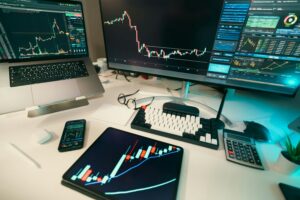
Trading robots are automated software programs that execute trades on behalf of investors using pre-programmed algorithms and artificial intelligence. These sophisticated tools analyze market data, identify trading opportunities, and place orders without human intervention. In Australia, trading robots operate within the regulatory framework set by ASIC while offering traders the ability to participate in forex, cryptocurrency, and CFD markets 24/7.
Core Components of Trading Robots
Trading robots consist of several essential elements that work together to automate the trading process:
Algorithm Engine: The heart of any trading robot is its algorithmic engine that processes market data and makes trading decisions based on mathematical models and technical indicators.
Data Analysis Module: This component continuously monitors price movements, volume patterns, and market trends across multiple timeframes to identify profitable trading opportunities.
Risk Management System: Built-in features control position sizes, set stop-loss orders, and manage overall portfolio exposure to protect traders from significant losses.
Execution Interface: The robot connects directly to trading platforms through APIs to place orders instantly when conditions match predetermined criteria.
How Trading Robots Function in Australian Markets
Trading robots in Australia operate through a systematic process that begins with market analysis and ends with trade execution:
- Market Scanning: Robots continuously scan financial markets for price patterns, technical indicators, and trading signals that match their programmed strategies.
- Signal Generation: When specific market conditions align with the robot’s parameters, it generates buy or sell signals based on its algorithmic rules.
- Order Placement: The robot automatically places trades through connected broker platforms, ensuring orders are executed at optimal prices without delay.
- Position Management: Throughout the trade lifecycle, robots monitor positions, adjust stop-losses, and implement trailing stops to maximize profits while minimizing risks.
- Performance Tracking: Advanced robots record all trading activities, allowing traders to analyze performance metrics and optimize strategies over time.
Types of Trading Robots Available to Australian Traders
Australian traders can access various types of automated trading solutions, each designed for specific markets and trading styles:
| Robot Type | Primary Market | Key Features | Best For |
|---|---|---|---|
| Expert Advisors (EAs) | Forex | MT4/MT5 compatible, customizable strategies | Currency pair trading |
| AI Crypto Bots | Cryptocurrency | 24/7 operation, multiple exchange support | Bitcoin and altcoin trading |
| cBots | CFDs | cTrader platform, advanced backtesting | Index and commodity trading |
| Social Trading Bots | Multiple markets | Copy successful traders, automated portfolio management | Beginners and passive investors |
Regulatory Compliance and ASIC Requirements
Trading robots operating in Australia must comply with strict regulatory standards established by the Australian Securities and Investments Commission (ASIC). These regulations ensure fair trading practices and protect investors from fraudulent activities.
Leverage Restrictions: ASIC limits leverage to 30:1 for major currency pairs, which trading robots must incorporate into their risk management systems.
Broker Authorization: Robots can only execute trades through ASIC-licensed brokers that meet capital adequacy requirements and client fund segregation rules.
Transparency Standards: Automated trading platforms must provide clear information about their strategies, risks, and historical performance to Australian users.
Benefits of Using Trading Robots in Australia
Trading robots offer several advantages that make them attractive to Australian investors:
Emotion-Free Trading: Robots eliminate psychological factors like fear and greed that often lead to poor trading decisions.
24/7 Market Monitoring: Automated systems can trade around the clock, capturing opportunities in global markets across different time zones.
Backtesting Capabilities: Traders can test strategies using historical data before risking real capital, improving the probability of success.
Consistent Strategy Execution: Robots follow predetermined rules without deviation, ensuring disciplined trading approach regardless of market conditions.
Multi-Market Coverage: Advanced robots can simultaneously monitor and trade multiple instruments across various markets, diversifying risk effectively.
Setting Up a Trading Robot in Australia
Getting started with trading robots involves several straightforward steps:
- Choose a Compatible Broker: Select an ASIC-regulated broker that supports automated trading and offers competitive spreads.
- Select Your Trading Platform: Download and install platforms like MetaTrader 4/5, cTrader, or proprietary broker software that supports automated trading.
- Install the Trading Robot: Add your chosen Expert Advisor, cBot, or trading algorithm to the platform following the provider’s installation guide.
- Configure Parameters: Set your risk tolerance, position sizes, and trading pairs according to your investment goals and account size.
- Test on Demo Account: Run the robot on a demo account first to understand its behavior and performance before committing real funds.
- Monitor and Optimize: Regularly review trading results and adjust parameters to maintain optimal performance in changing market conditions.
Types of Automated Trading Solutions Available
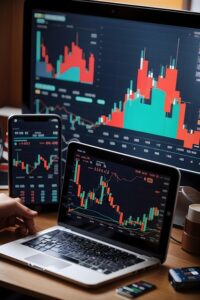
Australian traders can choose from several distinct automated trading solutions, each designed to meet different investment strategies and skill levels. These platforms range from hands-off copy trading systems to sophisticated AI-driven algorithms that execute trades based on complex market analysis.
Copy Trading Platforms
Copy trading platforms enable traders to automatically replicate the positions of experienced investors in real-time. These social trading solutions have gained significant traction among Australian beginners who want to leverage expert strategies without developing their own trading skills.
Key features of copy trading platforms include:
- Automatic trade replication – All trades made by selected experts are mirrored in your account proportionally
- Transparent performance metrics – Historical data shows win rates, risk levels, and profit percentages
- Diversification options – Traders can follow multiple experts across different markets
- Risk management controls – Users set maximum investment amounts and stop-loss parameters
Popular copy trading platforms offer access to thousands of strategy providers across forex, stocks, and cryptocurrency markets. Most platforms charge performance fees ranging from 10% to 30% of profits generated through copied trades.
Expert Advisors (EAs)
Expert Advisors represent automated trading programs designed primarily for MetaTrader platforms (MT4 and MT5). These algorithmic solutions execute trades based on pre-programmed technical criteria and market conditions.
Common EA Trading Strategies:
| Strategy Type | Description | Best Market Conditions |
|---|---|---|
| Scalping | High-frequency trades targeting small price movements | High liquidity, low spreads |
| Trend Following | Identifies and follows market momentum | Strong directional markets |
| Mean Reversion | Trades based on price returning to average | Range-bound markets |
| Arbitrage | Exploits price differences across markets | Multiple market access |
Leading forex EAs often achieve higher win rates, though performance varies significantly based on market conditions. Professional traders often use multiple EAs simultaneously, allocating different strategies to various currency pairs or timeframes.
EAs offer several advantages:
- Backtesting capabilities – Test strategies against historical data before risking real money
- Customizable parameters – Adjust risk levels, lot sizes, and trading hours
- No emotional interference – Execute trades strictly according to programmed rules
- 24/7 market coverage – Monitor forex markets continuously during trading hours
AI-Powered Trading Bots
AI-powered trading bots utilize machine learning algorithms to analyze vast amounts of market data and identify profitable opportunities. These sophisticated systems adapt to changing market conditions by learning from historical patterns and real-time price movements.
Modern AI trading bots incorporate:
- Neural networks that process multiple data streams simultaneously
- Natural language processing to analyze news sentiment and market reports
- Predictive modeling that forecasts price movements based on pattern recognition
- Dynamic risk adjustment that modifies position sizes based on market volatility
AI bots support diverse asset classes including forex, cryptocurrencies, stocks, and CFDs. Advanced platforms offer customizable risk levels, allowing conservative traders to prioritize capital preservation while aggressive investors can pursue higher returns.
These automated solutions require careful evaluation of security features, regulatory compliance, and platform reliability before implementation. Australian traders should verify ASIC regulation status and ensure robust data protection measures are in place.
Key Features to Look for in Trading Robots
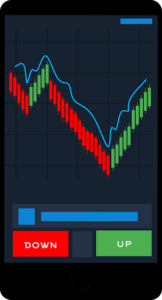
When selecting a trading robot for the Australian market, understanding the essential features that separate effective systems from ineffective ones can significantly impact trading success. These key components determine not only the robot’s performance but also its ability to protect capital and adapt to various market conditions.
Backtesting Capabilities
Backtesting capabilities allow traders to evaluate how their automated strategies would have performed using historical market data. This feature serves as a crucial validation tool before deploying real capital in live markets.
Essential backtesting features include:
- Historical data analysis: Access to extensive price data spanning multiple years across different market conditions
- Performance metrics: Detailed statistics including win rate, maximum drawdown, Sharpe ratio, and profit factor
- Optimization tools: Ability to fine-tune parameters and test multiple strategy variations simultaneously
- Market condition testing: Evaluation across bull markets, bear markets, and sideways trends
Quality trading robots provide backtesting environments that accurately simulate real trading conditions. They account for factors like spread variations, slippage, and commission costs that can significantly impact actual results.
Risk Management Tools
Risk management tools form the backbone of any successful trading robot, protecting capital from significant losses while maximizing profit potential. These features become especially critical given ASIC’s leverage restrictions of 30:1 for major currency pairs.
Core risk management features:
- Stop-loss settings: Automatic position closure when losses reach predetermined levels
- Money management modules: Position sizing based on account balance and risk tolerance
- Trailing stops: Dynamic stop-loss adjustment to protect profits as trades move favorably
- Hedging protocols: Simultaneous opposite positions to minimize exposure during volatile periods
- Maximum daily loss limits: Account protection through daily drawdown restrictions
Advanced trading robots incorporate sophisticated risk calculations that adjust position sizes based on market volatility. They monitor correlation between multiple positions to prevent overexposure to similar market movements. Some systems even include circuit breakers that halt trading during extreme market conditions or when performance deviates significantly from expected parameters.
Platform Compatibility
Platform compatibility ensures seamless integration between trading robots and various trading environments, enabling flexible access across different devices and operating systems. This feature becomes crucial for Australian traders who need reliable execution across multiple time zones.
Key compatibility considerations:
- Multi-platform support: Operation across MetaTrader 4, MetaTrader 5, cTrader, and proprietary platforms
- Cross-device functionality: Synchronization between desktop, web, and mobile applications
- Broker integration: Compatibility with major Australian-regulated brokers
- API connectivity: Direct market access through broker APIs for faster execution
- Cloud-based operation: 24/7 functionality without requiring constant computer operation
Modern trading robots offer web-based interfaces that eliminate installation requirements while maintaining full functionality. They provide real-time synchronization across devices, allowing traders to monitor and adjust settings from anywhere. Mobile compatibility has become particularly important, with dedicated apps offering push notifications for trade alerts and performance updates.
The best systems maintain consistent performance regardless of the platform used. They adapt to different broker specifications automatically, adjusting for variations in spread, commission structures, and execution speeds. This flexibility ensures Australian traders can switch between brokers or platforms without reconfiguring their entire trading setup.
Popular Trading Platforms Supporting Automation
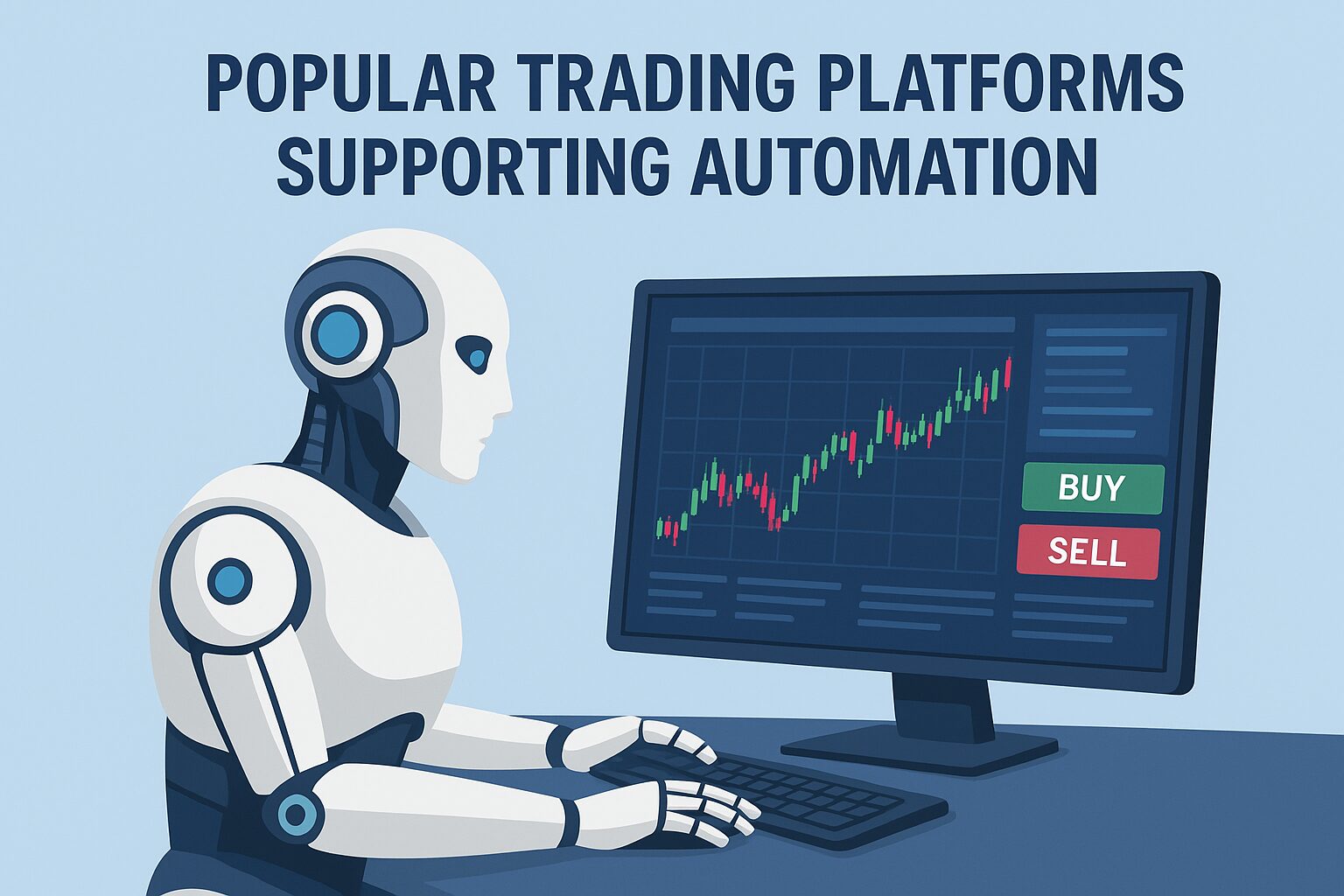
Australian traders have access to several powerful platforms that support automated trading through robots and algorithms. These platforms provide the infrastructure needed to deploy trading robots effectively while offering features like backtesting, optimization, and real-time execution.
MetaTrader 4 Integration
MetaTrader 4 (MT4) remains the most popular platform for automated trading in Australia, particularly for forex traders. The platform’s Expert Advisor (EA) functionality allows traders to implement automated strategies using the MQL4 programming language. MT4’s widespread adoption means traders have access to thousands of pre-built trading robots and a vast community of developers.
Key features that make MT4 ideal for automation include:
- Extensive EA marketplace with over 10,000 trading robots available
- Built-in strategy tester for backtesting robots with historical data
- Custom indicator support allowing robots to use specialized technical analysis
- VPS compatibility for 24/7 uninterrupted trading execution
- User-friendly interface that’s accessible to beginners while powerful enough for professionals
Australian brokers like Vantage offer optimized MT4 services with low latency connections and VPS hosting support, which are crucial for automated trading stability. The platform’s ability to handle multiple Expert Advisors simultaneously makes it perfect for traders running diversified automated strategies.
The installation process for trading robots on MT4 is straightforward. Traders download the robot files (typically with .mql4 and .ex4 extensions), place them in the platform’s Experts folder, and enable AutoTrading to activate the automation features.
MetaTrader 5 Integration
MetaTrader 5 (MT5) represents the evolution of automated trading platforms, offering multi-asset capabilities beyond forex. While maintaining compatibility with automated strategies through Expert Advisors, MT5 introduces enhanced features that benefit algorithmic traders working across different markets.
MT5’s automation advantages include:
- Multi-asset support covering stocks, futures, options, forex, and cryptocurrencies
- Advanced programming language (MQL5) enabling more complex algorithmic strategies
- Improved strategy tester with multi-threaded optimization and forward testing
- Economic calendar integration allowing robots to react to fundamental events
- Depth of Market (DOM) access for sophisticated order flow strategies
The platform’s expanded instrument list typically offers over 1,000 assets compared to MT4’s average of 250, giving automated traders more opportunities. Australian brokers supporting MT5 provide access to global markets, making it ideal for traders wanting to diversify their automated portfolios beyond traditional forex pairs.
MT5’s more sophisticated programming environment allows developers to create trading robots with advanced features like machine learning integration and complex risk management systems. The platform’s ability to handle multiple asset classes from a single interface streamlines automation for traders operating across different markets.
cTrader Integration
cTrader has emerged as a powerful alternative for automated trading, particularly favored by forex traders seeking advanced execution capabilities. The platform’s cAlgo feature enables algorithmic trading through cBots, which are automated trading programs written in C#.
Notable cTrader automation features include:
- Lightning-fast execution with server processing times under 1 millisecond
- Advanced backtesting with tick data and optimization capabilities
- Cloud-based operation allowing access from any device
- Sophisticated API for institutional-grade algorithmic trading
- Level II pricing providing full market depth for advanced strategies
The platform’s modern architecture makes it particularly attractive for high-frequency trading strategies where execution speed is critical. cTrader’s intuitive interface and powerful charting tools complement its automation capabilities, making it easier for traders to monitor their automated strategies in real-time.
Australian brokers offering cTrader typically provide direct market access (DMA) and ECN connectivity, ensuring that automated trades receive the best possible execution. The platform’s growing popularity in Australia reflects its reliability and performance advantages for serious algorithmic traders.
| Platform | Programming Language | Asset Coverage | Best For | Key Automation Feature |
|---|---|---|---|---|
| MT4 | MQL4 | Primarily Forex | Beginners to Advanced | Largest EA marketplace |
| MT5 | MQL5 | Multi-asset | Diversified traders | Advanced backtesting |
| cTrader | C# | Forex & CFDs | High-frequency trading | Sub-millisecond execution |
Each platform offers unique advantages for automated trading, and the choice depends on specific trading needs, asset preferences, and technical expertise. Australian traders benefit from strong broker support across all three platforms, ensuring reliable execution and competitive trading conditions for their automated strategies.
Pros and Cons of Using Trading Robots
Trading robots offer compelling advantages for Australian traders seeking to automate their investment strategies, but they also come with notable limitations that require careful consideration. Understanding both sides helps traders make informed decisions about incorporating automated systems into their trading approach.
Advantages
24/5 Market Coverage: Trading robots operate continuously throughout forex market hours, executing trades even when traders sleep or work. They monitor markets without breaks, ensuring traders don’t miss profitable opportunities during off-hours.
Lightning-Fast Execution: Automated systems analyze market data and execute trades within seconds, far surpassing human reaction times. They process complex calculations instantly, capitalizing on fleeting market opportunities that manual traders might miss.
Emotion-Free Decision Making: Trading robots eliminate emotional biases like fear, greed, and panic that often lead to poor trading decisions. They stick to predetermined strategies regardless of market volatility, maintaining discipline that human traders struggle to achieve.
Backtesting Capabilities: Robots allow traders to test strategies against historical data before risking real capital. This feature builds confidence in trading approaches and helps refine strategies based on past market performance.
Multi-Market Monitoring: Advanced trading robots can simultaneously track multiple currency pairs, cryptocurrencies, and other assets. They identify opportunities across various markets without the limitations of human attention spans.
Consistent Strategy Implementation: Automated systems execute trades based on exact parameters every time, ensuring strategy consistency. They don’t deviate from rules due to fatigue, distraction, or emotional impulses.
Disadvantages
No Profit Guarantees: Trading robots can’t ensure profitable outcomes and may incur significant losses during volatile market conditions. Market unpredictability means even sophisticated algorithms face potential failures.
Technology Dependence: System crashes, connectivity issues, or software bugs can disrupt trading operations and lead to missed opportunities or losses. Technical failures pose constant risks that require backup plans and monitoring.
Limited Adaptability: Robots struggle with sudden market changes or unexpected news events that require human judgment and intuition. They can’t interpret nuanced market sentiment or adapt to unprecedented situations.
Initial Investment Costs: Quality trading robots often require substantial upfront purchases or ongoing subscription fees. Additional costs include platform fees, data feeds, and potential learning resources.
Over-Optimization Risks: Excessive backtesting can create strategies that perform well historically but fail in live markets. This “curve-fitting” problem leads to unrealistic expectations and poor real-world performance.
Maintenance Requirements: Trading robots need regular updates, parameter adjustments, and performance monitoring. They’re not truly “set-and-forget” solutions, requiring ongoing attention from traders.
| Aspect | Advantages | Disadvantages |
|---|---|---|
| Operation | 24/5 continuous trading | Technology failures possible |
| Decision Speed | Executes in seconds | Can’t adapt to unexpected events |
| Emotions | Completely objective | Lacks human intuition |
| Testing | Historical backtesting available | Risk of over-optimization |
| Cost | Saves time | Initial and ongoing expenses |
| Strategy | Consistent execution | Inflexible to market changes |
How to Choose the Right Trading Robot for Your Needs
Selecting the right trading robot requires careful evaluation of multiple factors to ensure it aligns with your trading goals and risk tolerance. Australian traders should consider these three critical aspects when making their decision.
Trading Strategy Compatibility
Finding a trading robot that matches your preferred trading approach is essential for successful automated trading. Different robots specialize in various strategies, and understanding these differences helps traders make informed choices.
Identify your trading style first. Scalping robots execute numerous small trades throughout the day, while trend-following robots hold positions for extended periods. Counter-trend robots identify market reversals, and arbitrage robots exploit price differences across markets.
Match robot capabilities to your goals. High-frequency scalping robots like those using multiple strategies work best for active traders seeking consistent small profits. These systems typically achieve higher win rates but require stable internet connections and low-latency brokers. Conservative traders benefit from robots with built-in stop-loss protection and money management features.
Consider multi-strategy flexibility. Advanced trading robots offer multiple strategy options, allowing traders to adapt to changing market conditions. This versatility proves valuable when specific strategies underperform due to market shifts.
Cost Considerations
Understanding the total investment required for a trading robot helps traders budget effectively and avoid unexpected expenses. Costs extend beyond the initial purchase price.
Evaluate upfront and ongoing fees. Trading robots range from free open-source options to premium systems costing several hundred dollars. Some platforms typically charge monthly subscriptions between $50-$200.
Compare features against price points. Higher-priced robots often include:
- Advanced risk management tools
- Multiple currency pair support
- Regular strategy updates
- Dedicated customer support
- Verified performance records
Calculate total operational costs. Beyond the robot’s price, consider broker commissions, VPS hosting fees ($10-$50 monthly as an example), and potential drawdown periods. Budget at least 20% above the robot’s cost for these additional expenses.
Performance Metrics
Analyzing key performance indicators helps traders assess a robot’s potential effectiveness before committing real capital. Reliable robots provide transparent performance data.
Getting Started with Automated Trading in Australia
Embarking on automated trading requires careful planning and the right tools to succeed in Australia’s regulated market. Whether you’re a seasoned trader or just beginning, understanding the setup process and optimization techniques will help you maximize your trading robot’s potential.
Setting Up Your First Robot
Setting up your first trading robot involves selecting the right platform and configuring it to match your trading goals. Most Australian traders begin with MetaTrader 4 (MT4) due to its widespread broker support and extensive Expert Advisor marketplace.
Start by choosing a regulated ASIC broker that supports automated trading. Major Australian brokers typically offer MT4 or MT5 platforms with built-in automation capabilities. Once you’ve opened an account, download the trading platform and navigate to the Expert Advisors section.
Install your chosen robot by following these essential steps:
- Download the robot files (usually .ex4 or .ex5 format)
- Place them in the platform’s Expert Advisors folder
- Restart your trading platform to recognize the new robot
- Attach the robot to your preferred currency pair or asset chart
- Configure initial settings like lot size, risk percentage, and trading hours
Configure your robot’s parameters based on your risk tolerance and investment capital. Key settings include:
- Risk level: Set between 1-5% per trade for conservative approaches
- Trading pairs: Select major pairs like AUD/USD for lower spreads
- Time frames: Choose between M15, H1, or H4 based on your strategy
- Stop-loss and take-profit: Define exit points to manage risk effectively
Enable automated trading by clicking the “AutoTrading” button on your platform. Ensure your VPS or computer maintains a stable internet connection for uninterrupted operation.
Testing and Optimization
Testing your trading robot thoroughly before risking real capital protects your investment and validates your strategy. Backtesting uses historical market data to simulate how your robot would have performed in past market conditions.
Conduct comprehensive backtesting by accessing your platform’s Strategy Tester function. Set the testing period to at least 12 months of historical data to capture various market conditions. Run multiple tests with different parameter combinations to identify optimal settings.
Optimize your robot’s performance by adjusting technical indicators and parameters. Replace Simple Moving Averages with Exponential Moving Averages for more responsive signals. Fine-tune entry and exit rules based on backtesting results.
Forward testing on a demo account validates your optimization before live trading. Run your optimized robot on real-time market data for at least 4 weeks. Monitor its performance daily and document any unexpected behaviors or market reactions.
Popular programming languages for custom optimization include:
- MQL4: Native language for MT4 modifications
- Python: Advanced statistical analysis and machine learning integration
- C#: Enhanced performance for MT5 robots
Implement robust risk management during optimization to protect against market volatility. Set maximum daily loss limits, position sizing rules, and correlation filters to prevent overexposure to similar assets.
Regular performance reviews ensure your robot adapts to changing market conditions. Schedule monthly assessments to analyze profit consistency, drawdown patterns, and strategy effectiveness. Adjust parameters based on recent market behavior while avoiding over-optimization that reduces future performance.
Common Trading Robot Strategies
Trading robots in Australia employ sophisticated strategies to navigate market volatility and capitalize on profitable opportunities. These automated systems use three primary approaches that have proven effective in both cryptocurrency and traditional financial markets.
Grid Trading
Grid trading creates a systematic profit mechanism by placing buy and sell orders at predetermined price intervals within a specific range. This strategy excels in sideways or range-bound markets where prices fluctuate between support and resistance levels.
Grid bots establish multiple order levels called grid levels across the selected price range. When prices hit these levels, the robot automatically executes trades to capture profits from volatility. For example, a grid bot might place buy orders every $100 below the current price and sell orders every $100 above it.
Optimizing grid trading involves:
- Grid spacing adjustment: Setting the distance between orders based on market volatility
- Level configuration: Determining the optimal number of grid levels for maximum efficiency
- Order size management: Calculating appropriate position sizes for each grid level
- Dynamic parameter tuning: Adjusting settings in response to changing market conditions
Australian traders benefit from grid trading’s ability to generate consistent returns in choppy markets. The strategy works particularly well with major currency pairs that exhibit regular price oscillations within established ranges.
Trend Following
Trend following bots identify and capitalize on sustained price movements by automatically entering positions aligned with market momentum. These robots analyze real-time and historical data to detect emerging trends and filter out market noise from minor fluctuations.
The strategy operates on the principle that prices tend to move in trends rather than random patterns. Trend following robots use technical indicators such as:
- Moving averages to identify trend direction
- Momentum oscillators to confirm trend strength
- Volume analysis to validate price movements
- Support and resistance levels to determine entry and exit points
Implementing trend following requires precise timing and risk management. Australian traders using this strategy often combine it with stop-loss mechanisms to protect against sudden trend reversals. The approach works best in markets with clear directional movements, making it ideal for trending forex pairs and cryptocurrencies.
Advanced AI-powered platforms enhance trend following by incorporating machine learning algorithms that adapt to changing market conditions. These systems continuously refine their parameters based on performance data, improving accuracy over time.
Scalping Strategies
Scalping focuses on executing numerous small trades to capture minor price changes throughout the trading day. This high-frequency approach requires robots with lightning-fast execution capabilities and minimal latency to succeed in volatile market conditions.
Scalping bots typically:
- Execute trades within seconds or minutes: Holding positions for extremely short durations
- Target small profit margins: Aiming for gains of 1-10 pips per trade
- Utilize high leverage: Maximizing returns from small price movements
- Monitor multiple timeframes: Identifying micro-trends and momentum shifts
The strategy demands sophisticated technology to overcome challenges such as:
- Market spreads that can erode thin profit margins
- Execution delays that impact trade profitability
- Transaction costs from frequent trading
- Slippage during volatile market conditions
Australian scalping robots incorporate advanced features like predictive analytics and real-time market analysis to maintain competitive advantages. These systems often include built-in risk management tools such as automatic stop-loss and take-profit mechanisms to protect capital during rapid market movements.
Successful scalping requires robust infrastructure and low-latency connections to trading servers. Many Australian traders using this strategy choose brokers with competitive spreads and fast execution speeds to maximize profitability.
Regulatory Considerations for Australian Traders
Trading robots in Australia operate within a comprehensive regulatory framework overseen by the Australian Securities and Investments Commission (ASIC). Understanding these regulations is crucial for traders who want to leverage automated trading while remaining compliant with local laws.
ASIC License Requirements
ASIC requires all financial service providers offering automated trading platforms to hold an Australian Financial Services (AFS) license. Traders should verify their chosen broker displays their ASIC license number prominently on their website. Licensed brokers must maintain segregated client accounts and participate in compensation schemes that protect traders’ funds.
Tax Obligations and Reporting
Automated trading profits in Australia are subject to capital gains tax (CGT) or income tax depending on trading frequency and intent. The Australian Taxation Office (ATO) classifies traders into two categories:
| Trader Type | Tax Treatment | Key Characteristics |
|---|---|---|
| Investor | CGT applies | Holds positions longer-term, less frequent trading |
| Business Trader | Income tax applies | High-frequency trading, short-term positions |
Trading robots that execute numerous daily trades typically fall under business trading classification. Traders must maintain detailed records of all automated transactions including:
- Entry and exit prices
- Trading dates and times
- Profit and loss statements
- Associated costs and fees
Be sure to contact a trusted qualified accountant to ensure you are aware and compliant with any tax obligations.
Cryptocurrency Trading Compliance
Cryptocurrency trading robots face additional regulatory scrutiny in Australia. Key compliance requirements include:
Anti-Money Laundering (AML) Obligations: Crypto exchanges must implement robust KYC procedures. Trading bots accessing these exchanges inherit these requirements meaning traders must complete identity verification before automated trading begins.
Digital Currency Exchange Registration: Platforms facilitating crypto trading must register with AUSTRAC (Australian Transaction Reports and Analysis Centre). Bots like Bitcoin Code operate through registered exchanges to ensure compliance.
Transaction Reporting: Cryptocurrency transactions exceeding larger amounts must be reported to AUSTRAC. Automated systems should track cumulative daily volumes to ensure reporting compliance.
Risk Disclosure and Consumer Protection
ASIC mandates comprehensive risk disclosure for automated trading services. Brokers must clearly communicate:
- Potential losses from automated trading
- Technology risks including system failures
- Market volatility impacts on algorithmic strategies
- Past performance disclaimers
Trading platforms offering social or copy trading features face additional requirements. They must ensure copied strategies come from verified traders and provide transparent performance histories.
Key Takeaways
- Trading robots automate forex, cryptocurrency, and CFD trading in Australia, executing trades 24/7 using pre-programmed algorithms while adhering to ASIC’s 30:1 leverage restrictions for major currency pairs
- Multiple automated solutions are available for Australian traders, including Expert Advisors (EAs) for MT4/MT5, AI-powered crypto bots, and social copy trading platforms that suit different skill levels and investment strategies
- Essential features to evaluate include backtesting capabilities, risk management tools, and platform compatibility, with quality robots offering win rates between 60-93% and comprehensive performance metrics
- MetaTrader 4, MetaTrader 5, and cTrader are the primary platforms supporting automation, each offering unique advantages for different trading styles and asset classes
- Trading robots eliminate emotional decision-making and provide consistent strategy execution, but require initial investment, ongoing maintenance, and cannot guarantee profits in volatile markets
- ASIC regulations require traders to use licensed brokers and maintain detailed records for tax purposes, with automated trading profits subject to either capital gains tax or income tax depending on trading frequency
Conclusion
The automated trading landscape in Australia offers diverse opportunities for traders seeking to enhance their market participation. Whether it’s through forex Expert Advisors on MT4 or sophisticated AI-powered crypto bots on advanced platforms like cTrader, Australian traders now have access to tools that can execute strategies with precision and consistency.
Success with trading robots ultimately depends on careful selection and proper implementation. Traders who invest time in understanding their chosen robot’s mechanics and align it with their risk tolerance typically achieve better outcomes. Regular monitoring and optimization remain essential even with automation.
As ASIC continues to evolve its regulatory framework and technology advances bring new capabilities to automated trading systems, staying informed becomes crucial. The right trading robot paired with proper risk management and realistic expectations can become a valuable addition to any Australian trader’s toolkit. Those who approach automated trading with diligence and continuous learning position themselves best for long-term success in Australia’s dynamic financial markets.
Factors we took into consideration when creating this article:
- We developed criteria for selecting exchanges to evaluate, such as reputation, trading volume, user base, regulatory compliance, and the number of assets available to trade, as well as their websites to confirm they had licenses and compliance to operate in Australia, as well as other things like KYC protocols.
- Examined each platform’s security features, such as anti-phishing codes and 2FA codes, as well as its overall reputation for handling cyber security in accordance with industry best practices.
- Checked each platform for user-friendly design interfaces to ensure platforms are simple for newcomers to grasp.
- We gathered data on each exchange by visiting their respective website, reading user reviews, and checking for recent news or events pertaining to the platform.
Why trust AGR Technology
Alessio Rigoli launched AGR Technology in 2013 with the intention of focusing on YouTube and blogging on technology issues such as Android, Cyber Security, Blockchain, and EdTech. Since then, the business has grown to cover services such as website creation, hosting, software development, and digital marketing. AGR Technology helps clients in a variety of industries by delivering creative and high-quality technology solutions to assist them in growing.
Disclaimer: This material does not constitute an endorsement of futures, stocks, ETFs, CFDs, options, or any particular company, service, or offering. It is not intended to be used as investment advice or to make any recommendations. Futures, equities, ETFs, and options trading include a high risk of loss and are therefore not suitable for all investors. Trading CFDs and forex on leverage carries a larger chance of losing money quickly. Past performance is not indicative of future results. Before making any deals, consider your specific situation and get personal guidance. Visit the provider’s website to see the Product Disclosure Statement (PDS) and Target Market Determination (TMD) for the product and consider talking to a financial professional.
Frequently Asked Questions
What is a trading robot and how does it work?
A trading robot is automated software that executes trades based on pre-programmed algorithms. It analyzes market data, identifies trading opportunities, and places orders without human intervention. These systems operate 24/7, monitoring multiple markets simultaneously while following strict risk management rules. They eliminate emotional decision-making and ensure consistent strategy execution across forex, cryptocurrency, and CFD markets.
Is automated trading legal in Australia?
Yes, automated trading is completely legal in Australia. There are no laws prohibiting the use of trading robots. However, traders must use ASIC-regulated brokers and comply with leverage restrictions. Individual brokers may have their own policies regarding automated trading, so it’s important to verify their terms before implementation.
Which trading platform is best for automated trading in Australia?
MetaTrader 4 (MT4) remains the most popular choice due to its extensive EA marketplace and user-friendly interface. MetaTrader 5 offers advanced multi-asset capabilities, while cTrader provides high-speed execution ideal for scalping strategies. The best platform depends on your trading style, technical requirements, and the specific markets you plan to trade.
What are the main benefits of using trading robots?
Trading robots offer emotion-free decision-making, 24/7 market monitoring, and lightning-fast execution speeds. They can backtest strategies using historical data, manage multiple positions simultaneously, and maintain consistent strategy implementation. These systems eliminate human errors caused by fatigue or emotional bias while enabling traders to capitalize on opportunities across different time zones.
How much does it cost to start automated trading?
Initial costs vary significantly depending on your chosen approach. Basic Expert Advisors can be free or cost anywhere from $50-$500, while premium robots typically range from $500-$5,000. Additional expenses include VPS hosting ($20-$100/month), broker fees, and potential subscription costs. Many platforms offer demo accounts for testing without financial risk before committing real capital.
What are the risks of automated trading?
Trading robots don’t guarantee profits and can experience losses during unexpected market conditions. They depend entirely on technology, making them vulnerable to connectivity issues or platform failures. Over-optimization during backtesting can lead to poor real-world performance. Regular monitoring and updates are essential to maintain effectiveness and adapt to changing market conditions.

Alessio Rigoli is the founder of AGR Technology and got his start working in the IT space originally in Education and then in the private sector helping businesses in various industries. Alessio maintains the blog and is interested in a number of different topics emerging and current such as Digital marketing, Software development, Cryptocurrency/Blockchain, Cyber security, Linux and more.
Alessio Rigoli, AGR Technology
![logo-new-23[1] logo-new-23[1]](https://cdn-ihdfn.nitrocdn.com/eZVJvoSTyVixkEUySRKiaseNtUlmgCyu/assets/images/optimized/rev-4edbb71/agrtech.com.au/wp-content/uploads/elementor/thumbs/logo-new-231-qad2sqbr9f0wlvza81xod18hkirbk9apc0elfhpco4.png)

